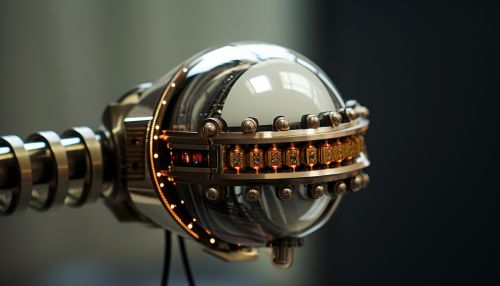Retinal Implants
Overview
Retinal implants are medical devices that are surgically implanted into the eye to restore a degree of vision to people suffering from certain types of blindness. These devices work by converting light into electrical signals that can be interpreted by the brain, effectively replacing the function of damaged or non-functioning photoreceptor cells in the retina.


History
The concept of retinal implants dates back to the 1960s, when researchers first began exploring the possibility of using electrical stimulation to restore vision. The first successful implantation of a retinal prosthesis was performed in the late 1980s. Since then, various types of retinal implants have been developed and tested, with varying degrees of success.
Types of Retinal Implants
There are two main types of retinal implants: epiretinal implants and subretinal implants.
Epiretinal Implants
Epiretinal implants are placed on the inner surface of the retina, near the ganglion cells. These implants stimulate the ganglion cells directly, bypassing the damaged photoreceptor cells.
Subretinal Implants
Subretinal implants, on the other hand, are placed beneath the retina, in the location where the photoreceptor cells would normally be located. These implants aim to replace the function of the damaged photoreceptor cells, converting light into electrical signals that can be interpreted by the remaining healthy cells in the retina.
Mechanism of Action
Retinal implants work by converting light into electrical signals. This is achieved through a combination of a camera, a processing unit, and an implanted device. The camera captures visual information, which is then processed and converted into electrical signals by the processing unit. These signals are then transmitted to the implanted device, which stimulates the retina, allowing the brain to interpret the signals as visual information.
Surgical Procedure
The procedure to implant a retinal device is a complex one, requiring a skilled ophthalmic surgeon. The implant is inserted through a small incision in the eye, and then positioned in the appropriate location, either on or beneath the retina. The procedure typically takes several hours, and patients are usually kept in the hospital for a few days for monitoring.
Post-Operative Care and Rehabilitation
After the surgery, patients typically undergo a period of rehabilitation, during which they learn to interpret the new visual signals being sent to their brain by the implant. This process can take several months, and involves working closely with a team of healthcare professionals, including ophthalmologists, rehabilitation specialists, and occupational therapists.
Benefits and Limitations
While retinal implants can restore a degree of vision to people with certain types of blindness, they are not a cure. The vision provided by these devices is often limited, and patients may still require the use of other assistive devices or techniques to navigate their environment. However, for many patients, the ability to perceive light and motion, recognize shapes, and in some cases, read large print, can significantly improve their quality of life.
Future Developments
Research into retinal implants is ongoing, with the aim of improving the quality of vision provided by these devices. Future developments may include improvements in the resolution of the visual information provided by the implants, as well as the development of implants that can be used in patients with a wider range of vision disorders.
